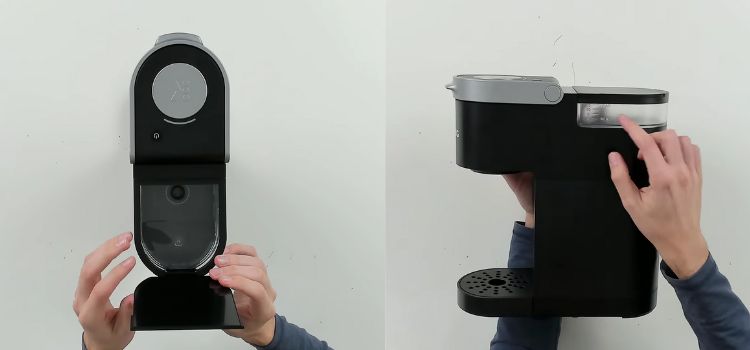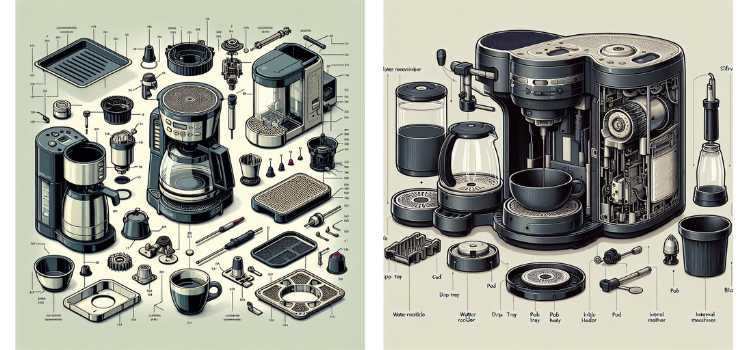As an Amazon Associate, I earn from qualifying purchases

If you own a Keurig coffee maker, you know the convenience it brings to your daily routine. A quick cup of coffee in the morning can be a lifesaver. However, like any appliance, there comes a time when your Keurig might need a bit of attention.
Whether it’s for deep cleaning, troubleshooting a problem, or replacing a part, disassembling your Keurig can seem daunting. But fear not; with a little guidance and patience, you can do it yourself. This article will walk you through the process, ensuring you’re equipped with the knowledge to handle your Keurig with care.
Necessary Tools For Disassembling a Keurig Coffee Maker
Before diving into the disassembly process, it’s crucial to gather the right tools. Having everything on hand will make the process smoother and prevent any unnecessary frustration. Here’s what you’ll need:
- Screwdriver: A Phillips head screwdriver is typically required for most Keurig models. It’s used to remove the screws that hold various components together.
- Pliers: Needle-nose pliers can be handy for gripping and removing small parts or clips that are difficult to reach with your fingers.
- Cleaning Cloths: Soft, lint-free cloths are useful for wiping down components as you disassemble them. This helps in identifying any areas that need cleaning or have build-up.
- Containers for Parts: Use small containers or ziplock bags to store screws and other small parts. Labeling them can help keep track of which parts belong to which section.
- Flashlight: A flashlight can help illuminate dark or hard-to-see areas inside the coffee maker, making it easier to identify components and connections.
Safety Precautions
Safety should always be a priority when dealing with electrical appliances. Follow these precautions to ensure a safe disassembly process:
- Unplug the Machine: Always disconnect your Keurig from the power source before starting any disassembly. This prevents the risk of electric shock.
- Handle Sharp Components with Care: Some internal parts, such as the needle that punctures the K-cup, can be sharp. Handle these components carefully to avoid injury.
- Keep Small Parts Away from Children and Pets: Disassembled parts can be choking hazards. Keep them out of reach of children and pets during the disassembly process.
Step-by-Step Disassembly Instructions

Now that you’re prepared with the necessary tools and safety precautions, it’s time to get into the actual disassembly of your Keurig coffee maker.
- Remove the Water Reservoir and Drip Tray: Start by removing the water reservoir and drip tray. These parts are typically designed to be easily detached without the need for tools. Simply lift them away from the machine and set them aside.
- Detach the Outer Casing: Using your screwdriver, remove the screws securing the outer casing of the Keurig. Start at the back of the machine and work your way around. Once all screws are removed, gently pry the casing apart, being careful not to force any connections.
- Access Internal Components: With the casing removed, you’ll have access to the machine’s internals. Identify the pump, needle, and tubing. Use your pliers to carefully detach any clips or connectors holding these components in place.
- Handle and Store Screws and Small Parts: As you remove parts, place screws and small components in your containers or bags. This organization will be immensely helpful during reassembly.
Tips for Reassembly
Once you’ve completed your task, whether it be cleaning or replacing a part, it’s time to put your Keurig back together. A few tips can make this process easier:
- Keep Track of Parts and Their Locations: Refer back to your labeled containers and the order in which you removed parts. This will help ensure everything goes back in its rightful place.
- Check for Wear and Tear: Before reassembling, inspect parts for any signs of wear or damage. Replacing worn parts now can save you from future issues.
- Test the Machine After Reassembly: Once reassembled, plug the Keurig back in and run a water-only cycle. This helps verify that everything is functioning correctly and flushes out any dust or debris that may have accumulated during disassembly.
Conclusion
Disassembling a Keurig coffee maker might seem intimidating at first, but with the right approach and tools, it’s a manageable task. Regular maintenance not only extends the life of your coffee maker but also ensures it runs efficiently.
Remember, always consult your user manual for model-specific instructions, and don’t hesitate to seek professional help if needed. Taking the time to understand your Keurig’s inner workings can lead to a more satisfying coffee experience and a longer lifespan for your trusty machine.
FAQ
How to disassemble a Keurig coffee maker for cleaning?
To disassemble a Keurig for cleaning, first unplug the machine. Remove the water reservoir and drip tray. Use a screwdriver to remove the outer casing screws. Gently detach internal components like the needle and tubing for thorough cleaning. Keep track of all parts for easy reassembly.
How do you remove parts from a Keurig?
Begin by unplugging the Keurig. Remove detachable parts like the water reservoir and drip tray. Use a screwdriver to unscrew and remove the outer casing. Carefully detach internal components such as the needle and tubing. Use pliers for any clips, ensuring parts are stored safely for reassembly.
How do you drain the inside of a Keurig?
To drain a Keurig, start by unplugging it. Remove the water reservoir and turn the machine upside down over a sink to let water drain. For a more thorough drainage, disassemble the machine to access internal tubing and manually drain any remaining water from these components.
How do I unclog a Keurig?
Unplug the Keurig and remove the water reservoir. Use a paperclip to clear clogs in the needle that punctures the K-cup. Run a water-only cycle to flush the system. For stubborn clogs, disassemble the machine to clean internal tubing and ensure all components are free of debris.
As an Amazon Associate, I earn from qualifying purchases